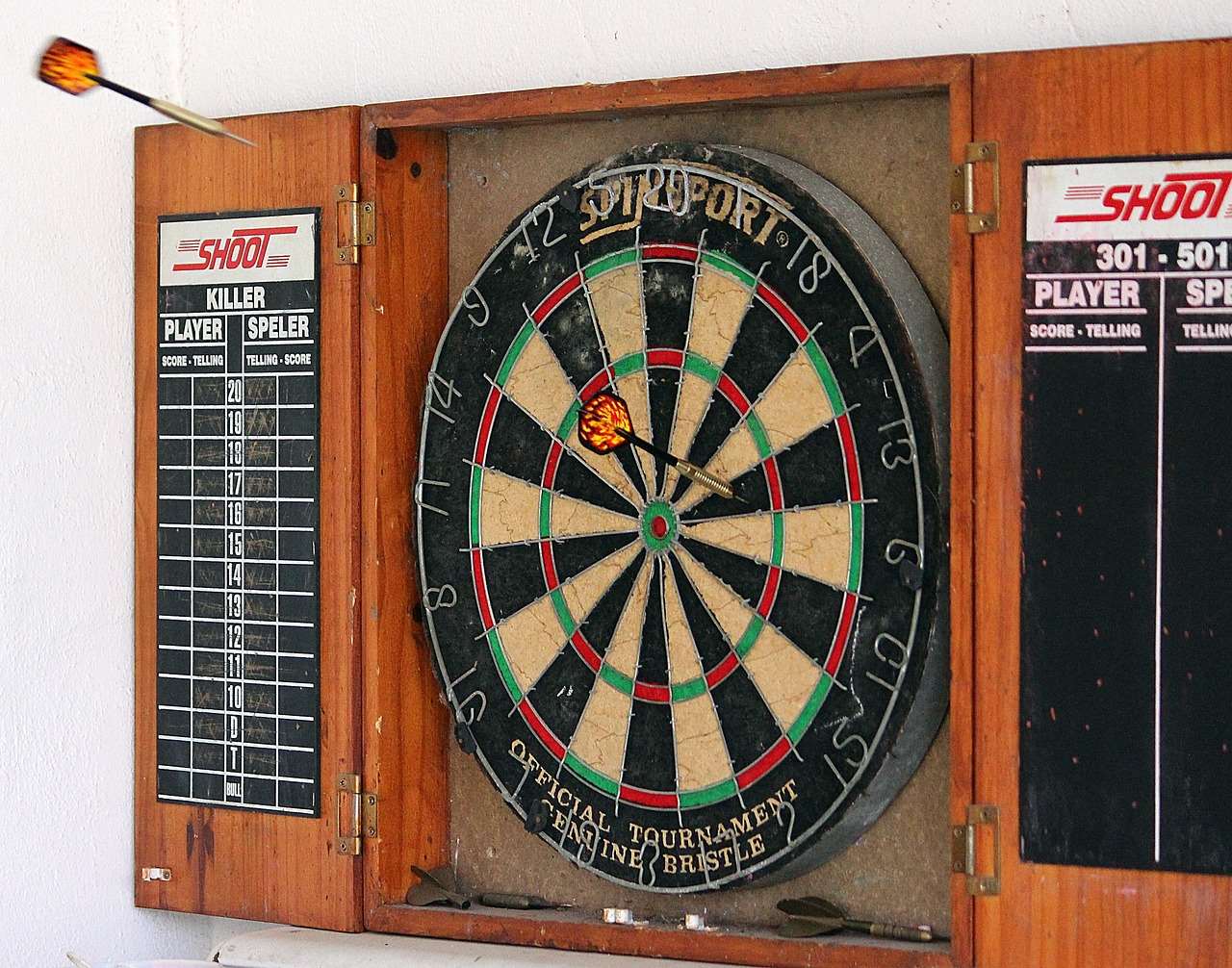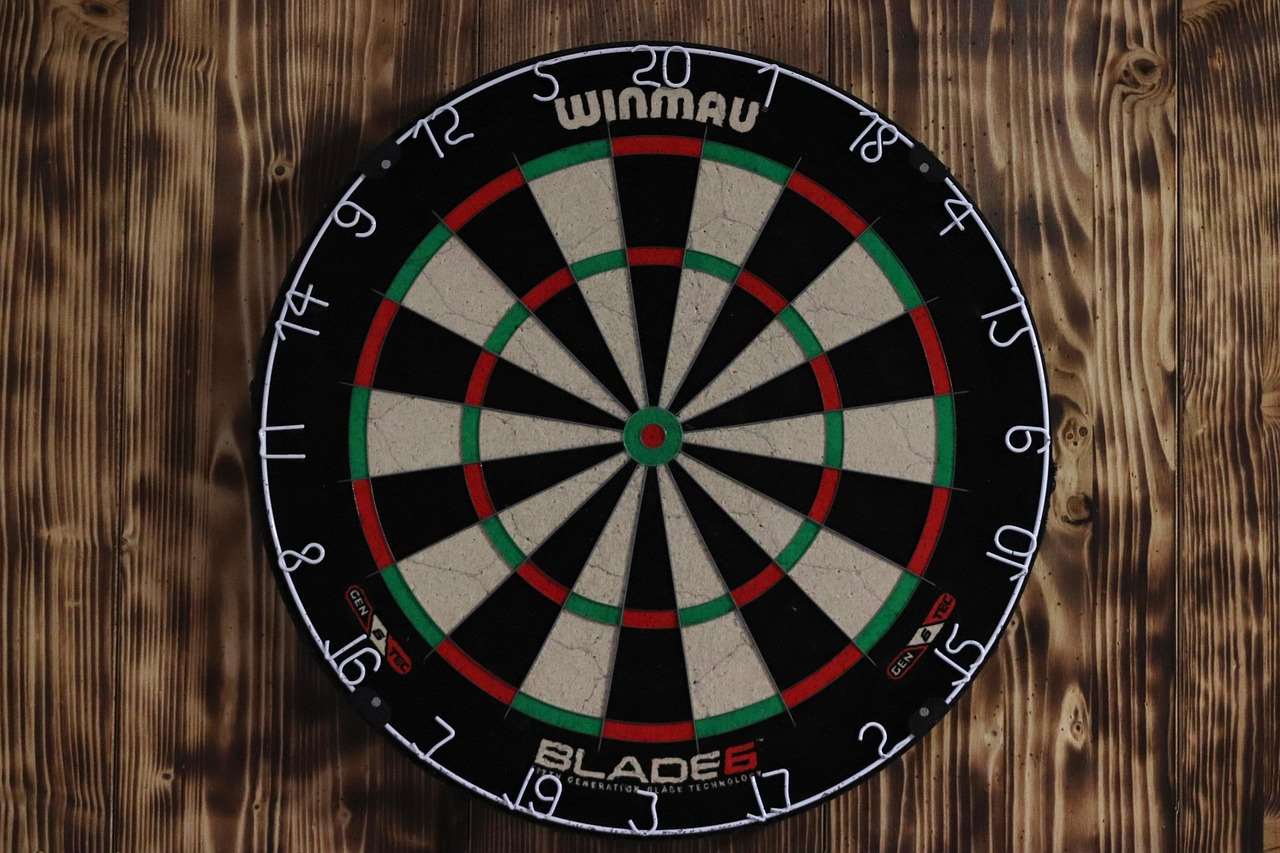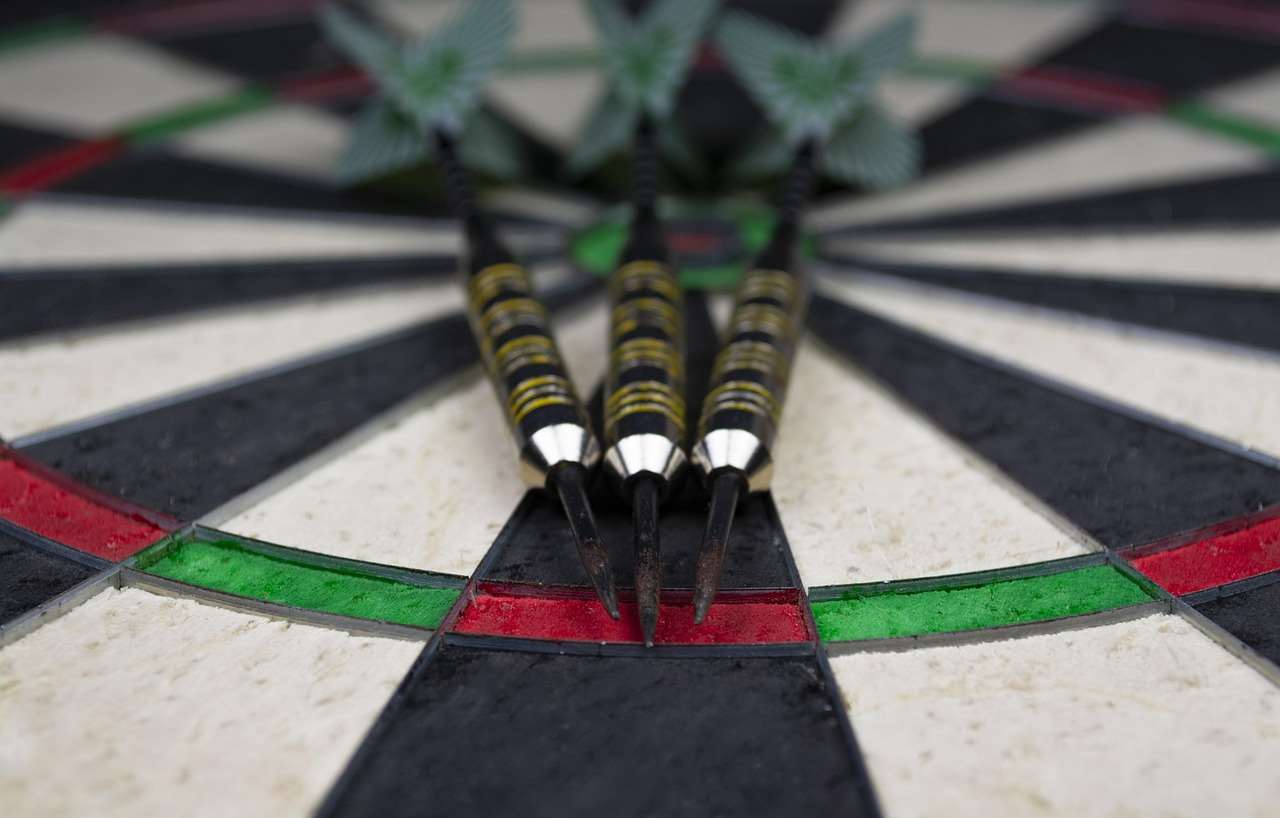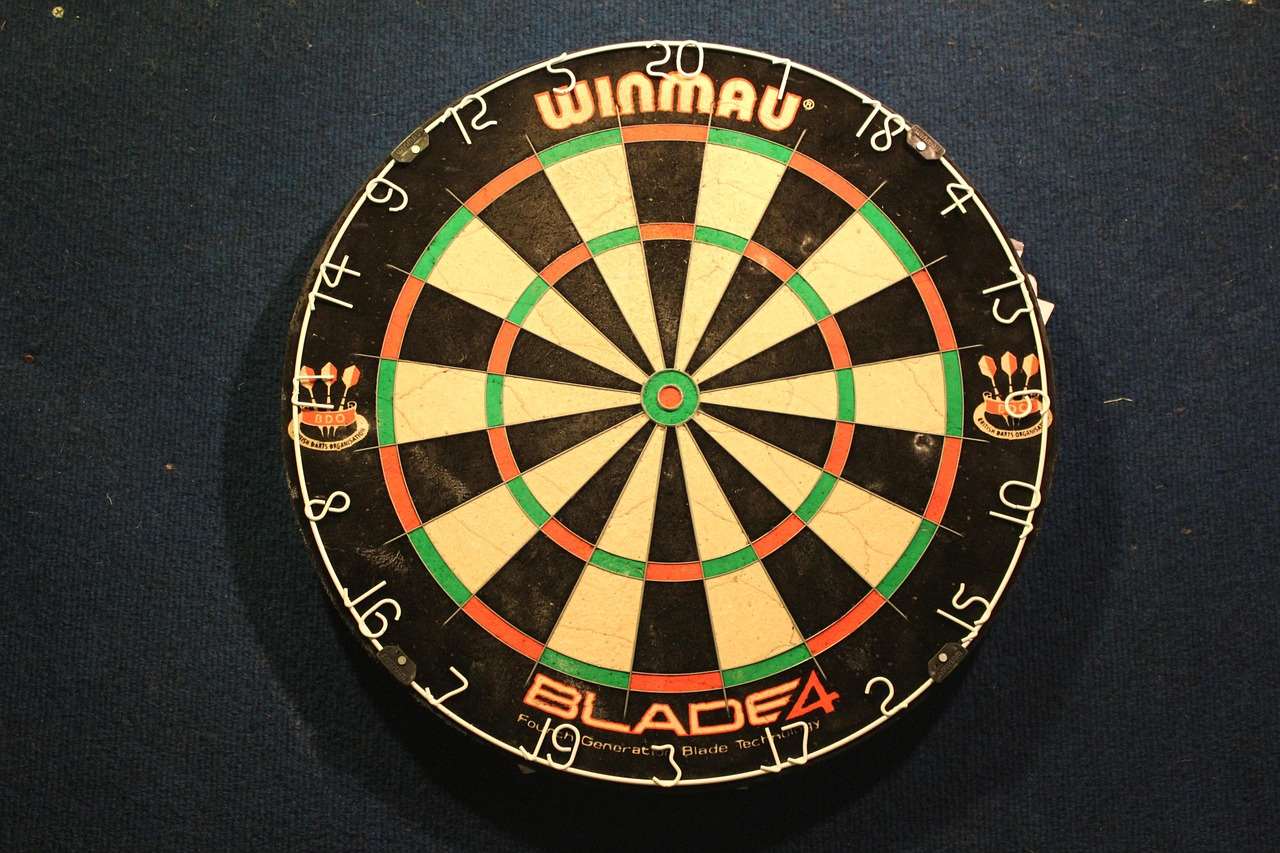Understanding how does darts scoring work is fundamental to enjoying and playing the game. In essence, you’re aiming to reduce your starting score (usually 501 or 301) to zero, and the value of each dart thrown depends on where it lands on the dartboard. This article will comprehensively cover the intricacies of darts scoring, including different segments, checkout strategies, and common scoring mistakes.
⚠️ Still Using Pen & Paper (or a Chalkboard)?! ⚠️
Step into the future! The Dart Counter App handles all the scoring, suggests checkouts, and tracks your stats automatically. It's easier than you think!
Try the Smart Dart Counter App FREE!Ready for an upgrade? Click above!
Decoding the Dartboard: A Segment-by-Segment Guide
The standard dartboard is divided into several key sections, each contributing to your overall score. Mastering these sections is crucial to understanding how does darts scoring work. Let’s break down each area:
- Numbers (1-20): The outer ring of numbers represents the base score for that wedge. Landing a dart within a standard wedge awards you that number of points.
- Double Ring (Outer Ring): Hitting a dart in the double ring doubles the value of the corresponding number. For example, a dart in the double 20 scores 40 points. This area is critical for checkouts.
- Treble Ring (Middle Ring): The treble ring triples the value of the corresponding number. A dart in the treble 20 scores a whopping 60 points – the highest single score possible.
- Bullseye (Center): The bullseye comprises two sections: the outer bullseye (also known as the single bull or green bull) scores 25 points, and the inner bullseye (also known as the double bull or red bull) scores 50 points.
- Outer Band (Wedge): This area lies outside the numbered sections and awards no points; any dart landing here will score zero.
Understanding these sections is the first step in mastering darts scoring. Strategic placement and aiming for specific sections are essential for efficient scoring and successful checkouts. You can use a darts flight cutter to modify your dart flights to improve dart trajectory and accuracy.

Calculating Your Score: The Fundamentals
Calculating your score in darts is straightforward, but accuracy is key. Each player starts with a predetermined score, typically 501 or 301, and the goal is to reduce that score to exactly zero. Each dart thrown contributes to reducing that total, and the combined total of the three darts thrown is subtracted. Here’s a breakdown of the key rules:
- Starting Score: The most common starting scores are 501 and 301.
- Dart Values: As explained above, each section of the dartboard has a specific value.
- Subtracting Points: The points scored from each throw are subtracted from your remaining score.
- Going Bust: If a player’s score is reduced to less than zero, or to one, it is called “going bust.” The player’s turn ends immediately, and their score reverts to what it was at the start of that turn. This is a critical rule affecting checkout strategies.
For example, if you start with 501 and score 60, 60, and 20 in your first throw, your new score would be 501 – (60 + 60 + 20) = 361.
The Double Out Rule: Checkout Strategies
A crucial element of darts scoring is the “double out” rule, which dictates that the final dart thrown must land in a double or the bullseye (considered a double 25). This adds complexity to the game and requires strategic thinking during the final stages. Understanding the double out rule is a key element of learning how does darts scoring work effectively.
Here are some common checkout strategies:
- Leaving a Double: Aim to leave yourself with a score that is a multiple of two, allowing you to aim for the corresponding double. For instance, leaving 40 requires you to hit the double 20.
- Common Checkouts: Some common checkouts include 32 (Double 16), 40 (Double 20), and 50 (Bullseye).
- Avoiding Bad Numbers: Numbers like 1, 3, 5, and other odd numbers make it difficult to leave a double. Avoid these scores strategically.
Many players use a best darts scoring app to help them calculate potential checkouts and track their progress. This can greatly improve your strategic play.

Common Scoring Mistakes and How to Avoid Them
Even experienced players can make scoring mistakes. Being aware of these common errors and taking steps to avoid them can significantly improve your game. Mistakes also greatly contribute to increased match duration, so being mindful of them is valuable.
- Miscalculating Scores: Double-check your calculations before each throw to ensure accuracy. Use a scoreboard or a scoring app to assist with this.
- Going Bust: Be mindful of your remaining score and potential checkouts. Avoid throwing darts that could result in going bust.
- Incorrectly Reading the Board: Pay close attention to where your darts land and ensure you are accurately recording the score.
- Misunderstanding the Double Out Rule: Always remember that the final dart must be a double or bullseye.
Practicing your mental arithmetic and using a reliable scoring system can help minimize these mistakes. You might even consider a target dart counter pc to improve your scoring accuracy.
Variations in Darts Scoring: Beyond 501
While 501 is the most common format, there are other variations in darts scoring that add variety and challenge to the game.
- 301: Similar to 501, but players start with a score of 301. This format is often used for shorter games.
- Cricket: A popular variation where players aim to score points on specific numbers (20, 19, 18, 17, 16, 15, and bullseye) and “close” those numbers by hitting them three times.
- Around the World: Players must hit each number on the dartboard in sequence, starting with 1 and progressing to 20.
- Killer: Each player is assigned a number, and they must hit that number three times to become a “killer.” They can then score on other players’ numbers to eliminate them.
These variations can be a fun way to test your skills and learn new strategies. Understanding these variations will further enhance your understanding of how does darts scoring work in different contexts.

Tips for Improving Your Darts Scoring Accuracy
Improving your darts scoring accuracy requires practice, focus, and a strategic approach. Here are some tips to help you enhance your scoring ability:
- Practice Regularly: Consistent practice is essential for developing muscle memory and improving your aim.
- Focus on Your Technique: Maintain a consistent stance, grip, and throwing motion.
- Aiming Points: Focus on a specific point on the dartboard when aiming.
- Checkout Practice: Dedicate time to practicing common checkouts.
- Mental Game: Develop a strong mental game and stay focused under pressure.
Consider investing in quality darts and equipment to improve your performance. Some players find that using target darts takoma xl cases helps protect their darts.
Advanced Scoring Techniques: Mastering the Checkout
Once you’ve grasped the basics of darts scoring, you can delve into more advanced techniques, particularly focusing on mastering the checkout. This involves strategic planning, risk assessment, and the ability to adapt to changing game situations. Mastering the checkout is crucial for effective play and ultimately, winning the game.
- Understanding Probabilities: Recognize which numbers offer the best opportunities for setting up a checkout. For example, leaving a score in the 81-100 range often leads to good opportunities to set up a double.
- Strategic Blocking: Sometimes, it’s advantageous to throw at a number to prevent your opponent from scoring effectively, even if it doesn’t directly improve your own position.
- Risk Management: Weigh the risks and rewards of each throw. A high-risk throw might lead to a quick checkout, but it also carries a greater chance of failure.
- Adapting to Opponent’s Game: Pay attention to your opponent’s scoring patterns and adjust your strategy accordingly.
These advanced techniques require experience and a deep understanding of the game. Consider joining a local darts league to gain experience and learn from other players.

The Psychological Side of Darts Scoring
Darts is not just a physical game; it’s also a mental one. The psychological aspects of the game can significantly impact your scoring ability. Maintaining focus, managing pressure, and developing a positive mindset are crucial for consistent performance.
- Staying Calm Under Pressure: Practice deep breathing and visualization techniques to stay calm during critical moments.
- Building Confidence: Focus on your strengths and celebrate your successes to build confidence.
- Learning from Mistakes: Don’t dwell on mistakes; instead, learn from them and use them as opportunities for improvement.
- Positive Self-Talk: Replace negative thoughts with positive affirmations.
Developing a strong mental game can give you a significant edge over your opponents. Some players even consult sports psychologists to improve their mental toughness. It’s also worth noting that darts fussball is a completely separate sport, even though they share the name “darts”.
Resources for Further Learning About Darts Scoring
There are numerous resources available to help you further your knowledge of darts scoring and improve your game. These resources can provide valuable insights, tips, and techniques to enhance your skills.
- Darts Coaching: Consider working with a qualified darts coach who can provide personalized instruction and guidance.
- Darts Books and Articles: Read books and articles on darts techniques, strategies, and scoring methods.
- Online Forums and Communities: Join online forums and communities to connect with other darts players, share tips, and ask questions.
- Professional Darts Events: Watch professional darts events to observe the strategies and techniques used by top players.
Continuously seeking new knowledge and resources will help you stay ahead of the game and reach your full potential. If you ever need dartcounter help, plenty of online resources are available.

Conclusion: Mastering Darts Scoring for a Winning Game
In conclusion, mastering how does darts scoring work involves understanding the dartboard’s segments, calculating scores accurately, applying checkout strategies effectively, and avoiding common mistakes. By practicing regularly, focusing on your technique, and developing a strong mental game, you can significantly improve your scoring ability and enjoy a more successful and rewarding darts experience. Remember to leverage resources like scoring apps, coaching, and online communities to continuously refine your skills. Now, grab your darts, practice those checkouts, and aim for the bullseye!
Ready to take your darts game to the next level? Download the best darts scoring app today and start tracking your progress!
Hi, I’m Dieter, and I created Dartcounter (Dartcounterapp.com). My motivation wasn’t being a darts expert – quite the opposite! When I first started playing, I loved the game but found keeping accurate scores and tracking stats difficult and distracting.
I figured I couldn’t be the only one struggling with this. So, I decided to build a solution: an easy-to-use application that everyone, no matter their experience level, could use to manage scoring effortlessly.
My goal for Dartcounter was simple: let the app handle the numbers – the scoring, the averages, the stats, even checkout suggestions – so players could focus purely on their throw and enjoying the game. It began as a way to solve my own beginner’s problem, and I’m thrilled it has grown into a helpful tool for the wider darts community.